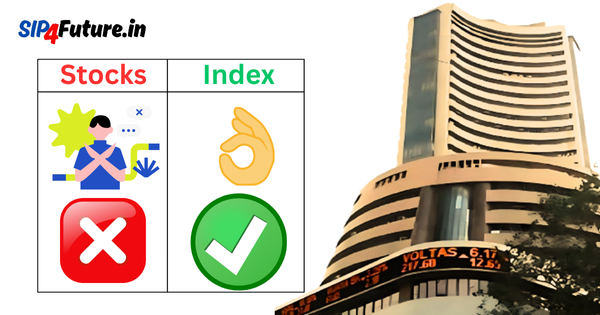On May 12, 2025, the Indian stock market is riding a wave of optimism, with the Nifty 50 soaring 2.97% to 24,720.15 points and the BSE Sensex climbing 2.88% to 81,744.91 points. This robust rally reflects strong investor confidence, fueled by a confluence of positive developments, including the much-anticipated Bharat-Pakistan ceasefire talks. These talks have sparked hopes of regional stability, boosting market sentiment. Alongside, stellar corporate earnings, particularly from companies like Birla Corporation, and favorable global market trends are driving this bullish momentum. Let’s dive into the factors propelling the Indian stock market to new heights.
What’s Driving the Indian Stock Market Surge?
The Indian stock market’s stellar performance today stems from a mix of geopolitical, economic, and corporate catalysts. The primary driver is the positive sentiment surrounding the Bharat-Pakistan ceasefire talks. Reports from credible sources like The Hindu suggest that both nations are engaging in constructive dialogue to de-escalate tensions along the Line of Control (LoC). This development has instilled confidence among investors, as regional stability often translates to economic growth and increased foreign investment.
Additionally, strong corporate earnings and sectoral performance are amplifying the rally. According to data from the National Stock Exchange (NSE), sectors like power, aviation, and utilities are leading the charge, with average gains exceeding 4%. Global market trends also play a role, with positive cues from Wall Street and Asian markets setting a favorable tone.
How Are Bharat-Pakistan Ceasefire Talks Impacting the Market?
The Bharat-Pakistan ceasefire talks are a game-changer for the Indian stock market. Historically, tensions between the two nations have led to market volatility, particularly affecting sectors like defense, aviation, and infrastructure. The current talks, however, signal a potential thaw in relations, which could reduce defense spending and redirect resources toward economic development. This optimism is reflected in the strong performance of aviation stocks, which have gained 5.90% on average, as per BSE India data.
Investors are betting on improved trade relations and reduced geopolitical risks, which could attract foreign institutional investors (FIIs). Data from Moneycontrol indicates that FIIs have been net buyers in the Indian market over the past week, with inflows of ₹12,000 crore. The ceasefire talks are likely to sustain this trend, further bolstering the Indian stock market.
What Role Do Corporate Earnings Play?
Corporate earnings are a cornerstone of today’s market rally, with companies like Birla Corporation stealing the spotlight. The cement giant’s stock hit a 20% upper circuit, closing at ₹1,268.80, driven by stellar Q4FY25 results. Here’s a snapshot of Birla Corporation’s performance:
| Metric | Q4FY25 Performance |
|---|---|
| Net Profit | ₹257.00 crore (up 33% YoY) |
| Cement Sales Volume | 5.2 million tonnes (up 8% YoY) |
| Capacity Utilization | 105% |
| Net Debt | ₹2,244.00 crore (reduced) |
| Dividend per Share | ₹10.00 |
Source: Birla Corporation Q4 Results
The company’s robust financials, coupled with its focus on debt reduction and capacity expansion, have made it a darling of investors. Other companies in the cement and infrastructure sectors are also witnessing strong buying interest, contributing to the Indian stock market’s upward trajectory.
How Are Key Sectors Performing?
The Indian stock market’s rally is broad-based, with multiple sectors posting impressive gains. Here’s a breakdown of the top-performing sectors as of May 12, 2025:
| Sector | Average Percentage Change |
|---|---|
| Power | 6.23% |
| Aviation | 5.90% |
| Engineering Services | 4.34% |
| Utilities | 4.29% |
| Capital Markets | 4.23% |
Source: NSE India
Why Is the Power Sector Leading the Rally?
The power sector’s 6.23% surge is driven by government initiatives to boost renewable energy and improve transmission infrastructure. The Ministry of Power recently announced a ₹2.5 lakh crore investment plan for green energy projects, which has buoyed investor sentiment. Companies like NTPC and Tata Power are benefiting from this push, with their stocks gaining significantly.
What’s Fueling Aviation’s Takeoff?
Aviation stocks are soaring, thanks to the ceasefire talks and rising domestic travel demand. The Directorate General of Civil Aviation (DGCA) reported a 15% YoY increase in passenger traffic in Q1 2025, signaling a strong recovery in the sector. Stocks like InterGlobe Aviation (IndiGo) and SpiceJet are capitalizing on this trend, with analysts predicting sustained growth.
How Do Government Decisions Impact Stock Prices?
Government policies play a pivotal role in shaping the Indian stock market. The ceasefire talks are just one piece of the puzzle. Recent policy announcements, such as tax incentives for renewable energy companies and infrastructure development plans, have created a conducive environment for growth. For instance, the Union Budget 2025 allocated ₹10 lakh crore for infrastructure projects, directly benefiting sectors like engineering services and utilities.
Moreover, the government’s push for “Make in India” and export-led growth has bolstered investor confidence in manufacturing and capital markets. These policies are expected to drive long-term growth, making the Indian stock market an attractive destination for both domestic and foreign investors.
What’s the Global Market Scenario?
The Indian stock market is not operating in isolation. Global markets are also contributing to the bullish sentiment. On May 11, 2025, the Dow Jones Industrial Average closed 1.5% higher, driven by optimism around U.S.-China trade negotiations. Asian markets, including Japan’s Nikkei and China’s Shanghai Composite, followed suit with gains of 1-2%. These positive cues have spilled over into the Indian stock market, amplifying the rally.
Additionally, stable crude oil prices and a strengthening Indian rupee are supporting market sentiment. According to Reuters, Brent crude prices have stabilized at $70 per barrel, easing concerns about inflation and input costs for Indian companies.
When Will the Rally Sustain?
The sustainability of the Indian stock market’s rally depends on several factors. The outcome of the Bharat-Pakistan ceasefire talks will be critical. A formal agreement could lead to sustained FII inflows and further market gains. Corporate earnings will also play a key role, with analysts expecting strong Q1FY26 results from sectors like power, aviation, and cement.
However, potential risks, such as global economic slowdown or unexpected geopolitical developments, could derail the rally. Investors are advised to stay vigilant and diversify their portfolios to mitigate risks.
Future Targets and Historical Returns
Analysts are optimistic about the Indian stock market’s prospects, particularly for standout performers like Birla Corporation. Here are some future price targets for Birla Corporation as suggested by research institutes:
| Research Institute | Target Price (₹) | Timeframe |
|---|---|---|
| Motilal Oswal | 1,450 | 12 months |
| ICICI Securities | 1,500 | 18 months |
| HDFC Securities | 1,400 | 12 months |
Historically, Birla Corporation has delivered strong returns, with a 5-year CAGR of 18% and a 1-year return of 25% as of March 2025. The Nifty 50, on the other hand, has posted a 5-year CAGR of 14%, underscoring the stock’s outperformance.
Conclusion
The Indian stock market’s 3% surge on May 12, 2025, is a testament to the power of positive geopolitical developments, robust corporate earnings, and supportive government policies. The Bharat-Pakistan ceasefire talks have ignited investor optimism, while stellar performances from companies like Birla Corporation and strong sectoral gains have fueled the rally. With global markets providing a favorable backdrop, the Indian stock market is poised for further growth, provided key catalysts like the ceasefire talks yield tangible results.
Disclaimer
This article is provided for educational purposes only and does not constitute financial advice. Investing in the stock market involves risks, and individuals should conduct their own research or consult a financial advisor before making investment decisions.




